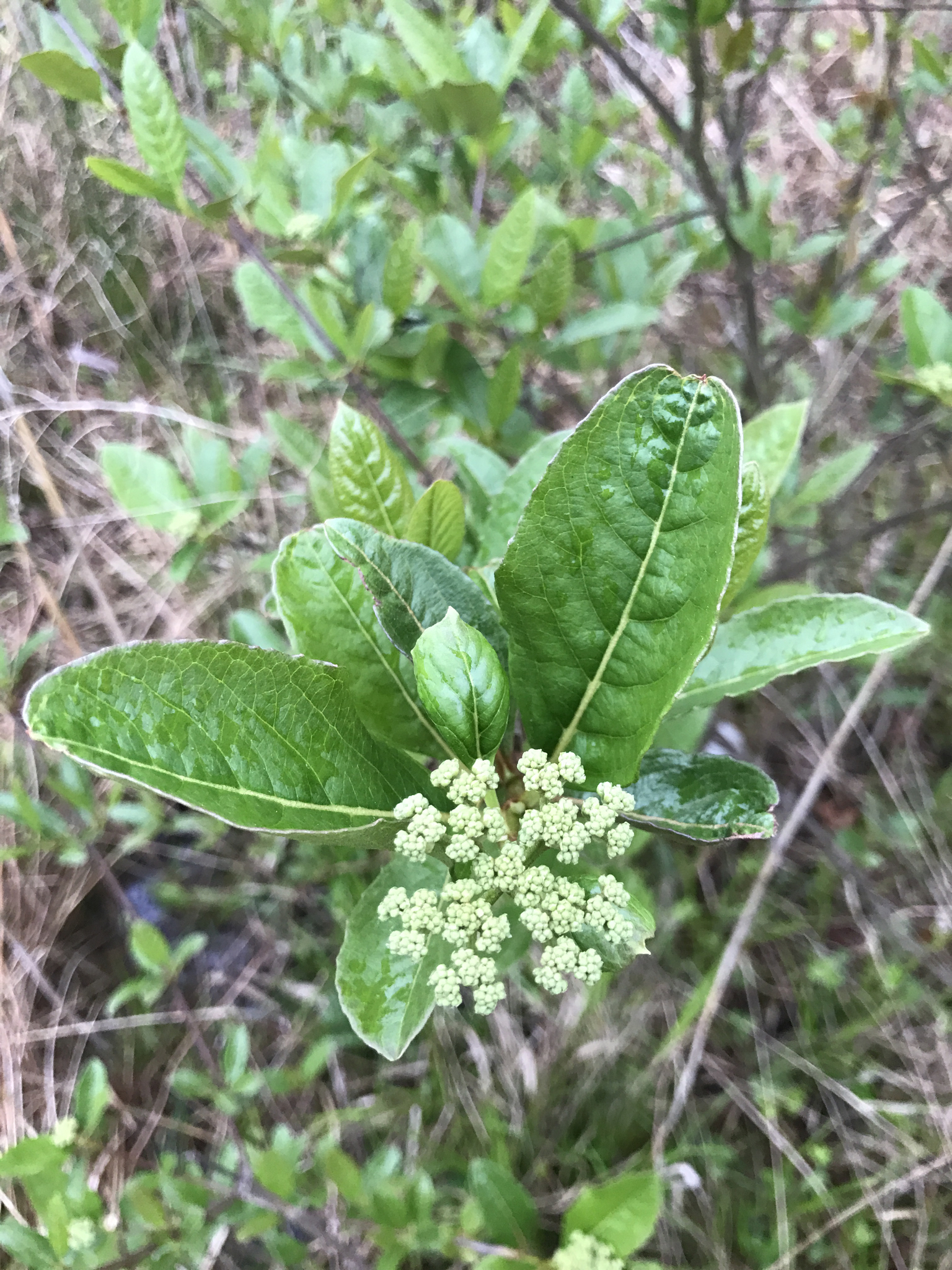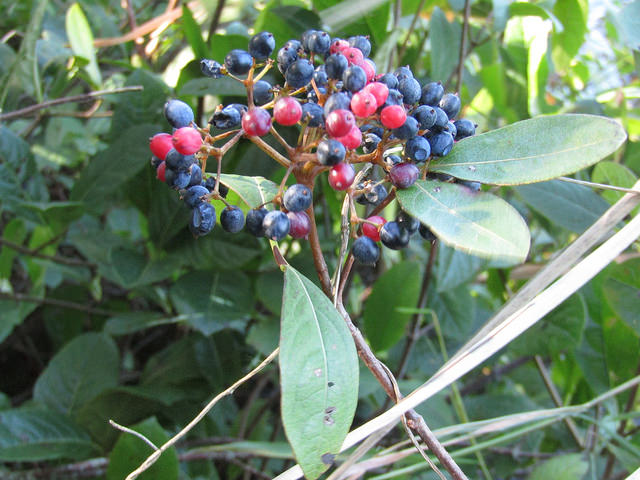Map Snapshot

















138 Records
Relationships
Host plant for Brown Scallopwing Moth.
Seasonality Snapshot
Source: Wikipedia
| Viburnum nudum | |
|---|---|

| |
| Scientific classification | |
| Kingdom: | Plantae |
| Clade: | Tracheophytes |
| Clade: | Angiosperms |
| Clade: | Eudicots |
| Clade: | Asterids |
| Order: | Dipsacales |
| Family: | Adoxaceae |
| Genus: | Viburnum |
| Species: | V. nudum
|
| Binomial name | |
| Viburnum nudum | |
Viburnum nudum is a deciduous shrub in the genus Viburnum within the muskroot family, Adoxaceae (It was formerly part of Caprifoliaceae, the honeysuckle family).[2]
One variety of the species is Viburnum nudum var. cassinoides; synonyms for this variety Viburnum nitidum Aiton, Viburnum cassinoides, Viburnum cassinoides var. harbisonii, Viburnum cassinoides var. nitidum, and Viburnum nitidum.[2][3]
Common names for the plant include withe-rod, witherod viburnum, possumhaw, and wild raisin.[2]
Description
[edit]Viburnum nudum is a shrub with opposite, simple leaves, on slender stems. The flowers are white, borne in late spring.
Range
[edit]It is native to North America from southern Ontario and Quebec to Newfoundland, south to Florida, and west to Wisconsin.[3]
Ecology
[edit]The fruit is eaten by wildlife, and deer browse the foliage.[4] It is a larval host to spring azures and hummingbird clearwing moths.[5]
Conservation status in the United States
[edit]It is listed as endangered in Kentucky and Pennsylvania[6] and as special concern species and believed extirpated in Connecticut.[7]
Native American ethnobotany
[edit]Cuisine
[edit]The Abenaki use the fruit[8]: 152 and the grains of var. cassinoides [8]: 173 for food. The Algonquin people eat the berries of var. cassinoides.[9]
Medicinal use
[edit]The Cherokee have several medicinal uses for Viburnum nudum var. cassinoides. They take an infusion of it to prevent recurrent spasms, use the root bark as a diaphoretic and a tonic, and take a compound infusion of it for fever, smallpox and ague. They also use an infusion of the bark as a wash for a sore tongue.[10]
-
Foliage and flowers
-
"Winterthur" foliage in early Fall
-
1913 Illustration[11]
References
[edit]- ^ Botanic Gardens Conservation International (BGCI).; IUCN SSC Global Tree Specialist Group (2019). "Viburnum nudum". IUCN Red List of Threatened Species. 2019: e.T144047738A149042014. doi:10.2305/IUCN.UK.2019-2.RLTS.T144047738A149042014.en. Retrieved 20 November 2021.
- ^ a b c Viburnum nudum var. cassinoides, Lady Bird Johnson Wildflower Center.
- ^ a b NRCS PLANTS Database
- ^ Little, Elbert L. (1980). The Audubon Society Field Guide to North American Trees: Eastern Region. New York: Knopf. p. 673. ISBN 0-394-50760-6.
- ^ Adelman, Lauren (5 July 2017). "The Joy of Butterfly Host Plants". Lewis Ginter Arboretum. Retrieved 26 April 2020.
- ^ "Plants Profile for Viburnum nudum (possumhaw)". plants.usda.gov. Retrieved 23 December 2017.
- ^ "Connecticut's Endangered, Threatened and Special Concern Species 2015". State of Connecticut Department of Energy and Environmental Protection Bureau of Natural Resources. Retrieved December 23, 2017. (Note: This list is newer than the one used by plants.usda.gov and is more up-to-date.)
- ^ a b Rousseau, Jacques (1947). Ethnobotanique Abenakise, Archives de Folklore 11:145-182.
- ^ Black, Meredith Jean (1980). Algonquin Ethnobotany: An Interpretation of Aboriginal Adaptation in South Western Quebec, Ottawa. National Museums of Canada. Mercury Series Number 65, page 107.
- ^ Hamel, Paul B. and Mary U. Chiltoskey, 1975, Cherokee Plants and Their Uses -- A 400 Year History, Sylva, N.C. Herald Publishing Co., page 62
- ^ Britton, N.L., and A. Brown. (1913). An illustrated flora of the northern United States, Canada and the British Possessions. 3:273.




















![1913 Illustration[11]](http://upload.wikimedia.org/wikipedia/commons/thumb/3/34/Viburnum_nudum.png/104px-Viburnum_nudum.png)